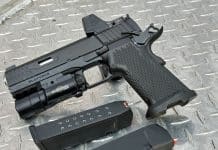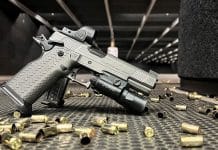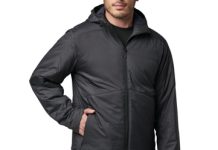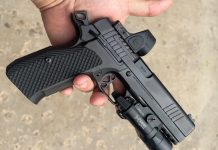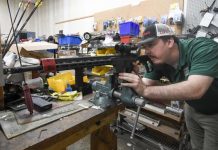David shares a few upgrades for AR lowers that make them faster and more accurate without increasing the risk of failure.
AR purists commonly use the phrase “if Stoner would have wanted it that way, he would have made it that way” and in some aspects I agree, but recently the amount of manufacturers entering the aftermarket part world has certainly increased. This is good and bad as it can give you more, quality options to upgrade your rifle. The downside is that it also increases the chances of catching a product that is inferior or simply a gimmick. Every once in a while a gem shines through though that certainly improves the function, while keeping the same durability and quality.
For years I have been running Mil spec lower control parts but recently I have found some simple upgrades for my lowers that have made me faster and more accurate without increasing my chances for weapon failure. One has even made the rifle easier to break down in case of a malfunction or when it is time for cleaning.
The takedown pin and pivot pin are two parts of the rifle that have hardly been changed over the years, with the exception of the large pin offering Colt put out some years ago, which was hardly an improvement. That was until Battle Arms Development came up with the E.P.S or Enhanced Pin Set. It is hard to see the advantage that a set of pins make until you get a hold of these.
The bolt release side of the E.P.S is indented slightly instead of the typical flat end. This aides in giving a solid “push” without slipping off, particularly when pushing with a bullet tip if you have a tight fitting pin.
On the other side of the rifle the rear takedown pin is round for the most part but with a slight cut at the 2 O’clock. It is then angled in to the pin, making it so that you can get a positive grip to pull the pin the rest of the way out. This helps when wearing gloves and also makes it simple for you to snag it with the rim of a bullet or spent round.

The real star of the party is the pivot pin. If you have ever built a lower then you have, most likely launched a detent into orbit. Battle Arms Development seems to have the solution. On their pivot pin they have made shallow channel that runs the length of the pin. You then set the detent in that channel and place the supplied magnet on the backside. This allows you to slide the detent into the lower, push down on the pin and you have installed your pivot pin. No razors, tape or extra detents and pins necessary.

The other nice feature of the pivot pin is the dimples put on it and that it is also angled in for a better grip when pulling the pin.

I have also added a VLTOR A5 system to my current set up. They are slightly longer than the mil-spec receiver extension but have proven themselves on many calibers and barrel length to provide a smoother shooting rifle with greater reliability.

An ALG Combat trigger will provide you with a smoother trigger pull and get rid of that grittiness and give you a sharp, clean trigger pull without the risk of having a trigger that will wear out over time or give you weak primer strikes on the military grade ammo that these things eat.
This lower is a Joebob Outfitters Spartan lower that comes with the ability to accept a 45 degree safety. The traditional 90 degree safety has worked for a long time having a shorter, quicker throw is a nice touch so you don’t find yourself reaching with your thumb to try and disengage it.
For my purposes I chose the Battle Arms Development ST ambi safety. The 45 degree safety is a nice touch if you like running an ambi but do not want it to interfere with the trigger finger and adding the short lever the B.A.D has available on the strong hand side helps even more with that.

If you are planning to build a lower that is built like a tank but drives like a Cadillac the parts are certainly out there. It is a great thing to be able to build a battle rifle that is as smooth as a competition gun without every risking giving up a bit of quality or reliability.




